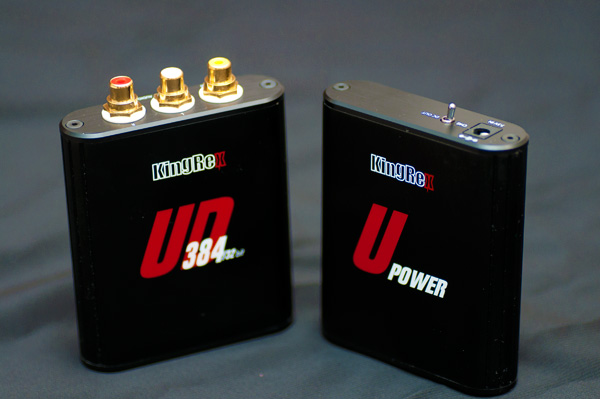Amarra Wasapi For Mac
Audirvana Plus is the music playback software that gives the best possible Sound Quality Audirvana Plus reveals the HiFi potential of your computer and turns it into a high-end music player To significantly improve Sound Quality and transform your computer into a high-end HiFi player, Audirvana Plus: – highly reduces the audio signal path to eliminate all the interferences and other electromagnetic interferences – carries out the necessary digital processing before conversion to analog with very high quality algorithms. I’m very happy now with Audirvana Plus playing real DSD with no problems and with the best SQ I never got from digital audio. The dynamics, dynamic contrast, soundstage, detail and musicality is unlimited. Is like to remove a lot of veils from the recorded music. It’s a completely new world Other player A. Is a joke since it is a converter from DSD to PCM. Other player B.
Is very buggy, and dammaged some of my DSD files, thanks God I have backups. A lot of sh.t had been talking about DSD, in favor to PCM. As I always stated the problem is on DSD software and players. Congratulations again to allow me to get in this incredible experience!
Those who follow computer audio forums have probably heard the name Amarra a few times. If you have an Apple computer running iTunes and want to get the most out of high resolution audio, Sonic Studio's Amarra software offers a way around some of the inherent problems when switching resolutions and the way the Apple OS handles audio. The company's Jonathan Reichbach was at CES to talk about the most recent release of the program along with its mini version. Both versions bypass Apple's Core Audio for 'bit perfect' data straight to your DAC. The full-fledged version of the program runs $995 and enables playback of all resolutions of PCM up to 192kHz while the mini version is available as a single-computer license for $295 or available with an iLok dongle (can be moved around multiple computers one at a time) for $395 and supports up to 96kHz audio.
The problem with iTiunes that the Amarra program addresses is that iTunes does not take exclusive control of CoreAuduio. Thus, while it is bit-perfect when playing files that match the format set for the output device in AudioMidi Set-Up, it uses the (not-very-good) real-time Qucktime SRC for files with other sample rates and is thus not bit-perfect. Amarra automatically switches CoreAudio's sample rate to match that of the file selected.
In iTunes, you have to exit iTunes, open AudioM idi Setup, reset the playback device parameters, exit AudioMidi Setup, then reopen iTunes. A pain in the proverbial. I downloaded Amarra mini and I keep going back and forth on what I like better. I-tunes or Amarra?
Amarra applies some very nice EQ settings, I like the Amarra R&B EQ, but also seems to add high quality filters. I-tunes is more raw and open on my high end system.


(Ayer QB9 DAV, McIntosh Tube Pre- and 400w solid state amp.) I like having both, because it depends on the recording. For 24/96 high res files, Itunes works perfectly, and you don’t need Amarra, though I did need Amarra to convert the flac downloads to AIFF 24/96. Took 45 seconds, and the AIFF files turned out perfect, and they will play on my Mac Mini that I use for a music server. This is an update to my September 9th post.
As time has passed, I no longer use I-Tunes at all. Amarra is smoother and nicer sounding than I-Tunes. The “openness” that I heard originally with I-Tunes became irritating over time. (It lead to listening fatigue.) The smoother, more “Tube Like” or “Analog Like” sound of Amarra grew on me, to the point were I no longer liked the sound of I-Tunes. In addition, the R&B Eq setting in Amarra is a perfect match for my system.
That said, just to drive myself crazy, I also bought Pure Vinyls Channel D software. As far as I can tell, so far, Amarra sounds MUCH better than Channel D on the MacIntosh 402’s 8 Ohm taps, but Channel D sounds better on the Mac’s 4 Ohm Tap. I also like the fact that Channel D up-samples to 88.2. Currently, I am using Channel D, on the 4 Ohm taps. I really think you need to buy the program that matches your system. If you have an all tube system, Amarra my be too closed in for you. If you have a solid sate system, Amarra may be a perfect match.

Hi, I have a Benchmark DAC1 HDR feeding into an Audio Research VSi60 integrated tube amplifer, which powers two Martin Logan Theos electrostatic speakers (4 ohms). Are you saying that your experience with Amarra is that it sounds much better than iTunes, but that Channel D would be a better match for 4 ohm speakers? I'm confused by your comment from 2010 - I think you said that Amarra only sounded good at 8 ohms, but Channel D sounded better at 4 ohms.
Amarra Wasapi For Mac Mac
I have my 4 ohms speakers hooked up to the 4 ohm taps on my tube amplfier, so I'm not sure why it should make a difference to the Amarra player, which would be upstream of the DAC. I'm contemplating purchasing the better version of Amarra and wanted to get your input here. Thanks in advance.